Function: It is the newest addition the ACE Integrated Fitness TrainingTM (ACE IFTTM) Model continuum and is an important component of a healthy lifestyle. Without function, we are unable to perform activities of daily living, leaving us dependent on others for assistance and unable to work toward other goals in health, fitness and performance. To remain functional with every day activities such as walking up stairs, using a vacuum or putting something on a high shelf, addressing muscular balance and range of motion within the fitness routine, while also including low-intensity cardiovascular efforts, is key. Within the ACE IFT Model, these two components are referred to as Stability and Mobility training and Aerobic-base training. It is important that both aspects are addressed for all populations, not just clients who are older or have injuries.
When looking at the body from the ground up, it follows a pattern of stable and mobile joints, alternating as we ascend upward. To improve the function of the entire body, we start from the ground up by using exercises that will challenge the stability of joints that are meant to be stable, while increasing the mobility of joints that are designed to be mobile. By using this method, injuries can be prevented and function improved (or restored).
Stability Workouts & Functional Exercises for Improving Stability and Mobility
Use the following stability workouts in your clients’ current workout routines as part of a dynamic warm-up, if a client is new to exercise, start with these to begin developing his or her stability and mobility, while also gently increasing heart rate. Have the client complete one to three sets of five to 10 repetitions of each.
(For more of a challenge and to strengthen the muscles of the feet, have your client perform all these stability workouts without shoes.)
Foot Stability - Stationary Runner
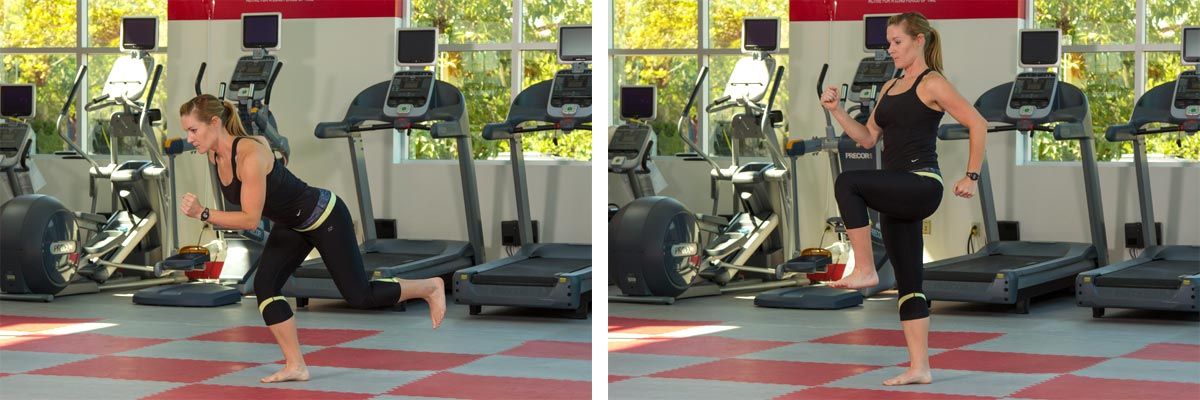
With one foot grounded and the knee slightly flexed, move the body slowly through a running action while maintaining balance.
Ankle Mobility – Standing Plantar-/Dorsiflexion

While standing, rock slowly from the toes to the heels, working the ankle through a full range of motion.
Knee Stability – Lunge Matrix
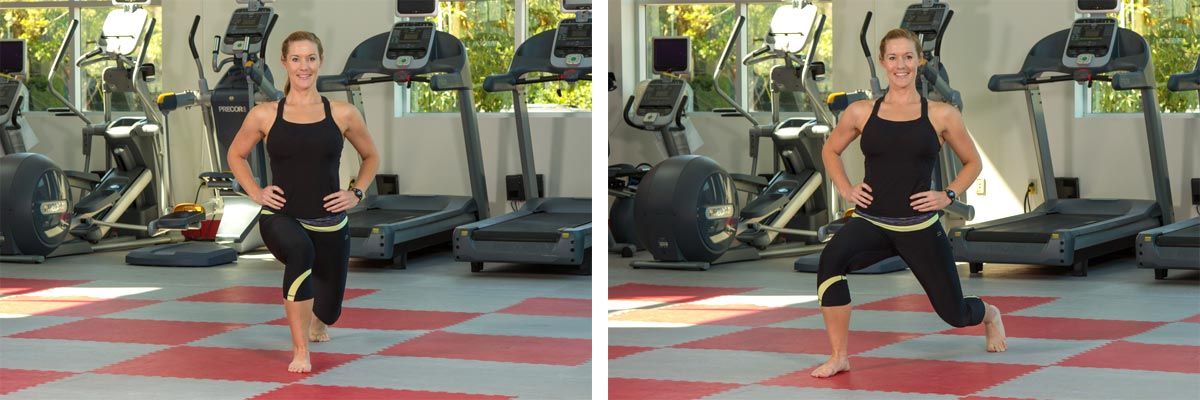

Perform lunges in a clockwise motion, moving from a traditional forward lunge to a diagonal lunge, lateral lunge, reverse lunge and crossover lunge. There is no need to go to great depths, because this exercise focuses on increasing the strength of the muscles and connective tissue surrounding the knee joint while also improving range of motion at the hips.
Hip Mobility – Walking Hip Openers
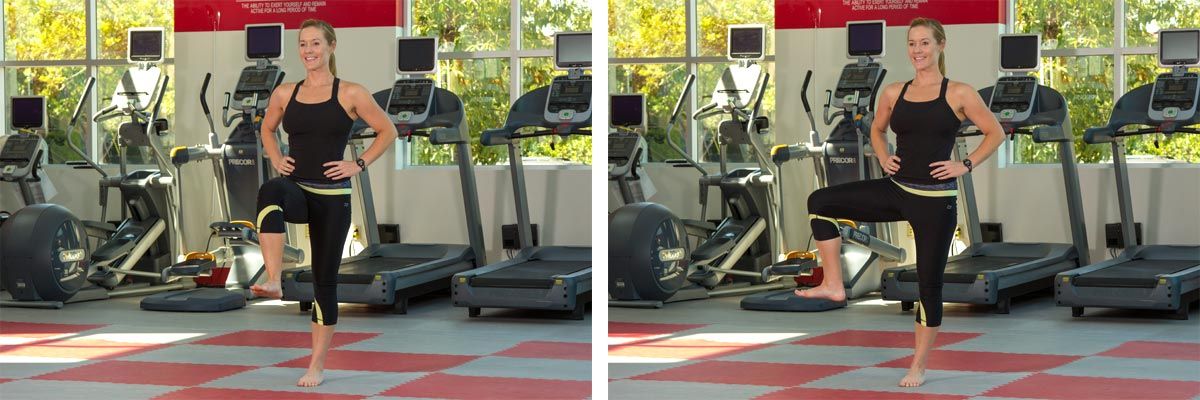
While walking, move one knee out, up and around at the hip joint and then switch to the other leg. Maintain a forward-walking motion and avoid rotating the shoulders. Be sure to perform this exercise in the reverse direction, as well.
Lumbar Spine Stability - Lateral Bird Dog
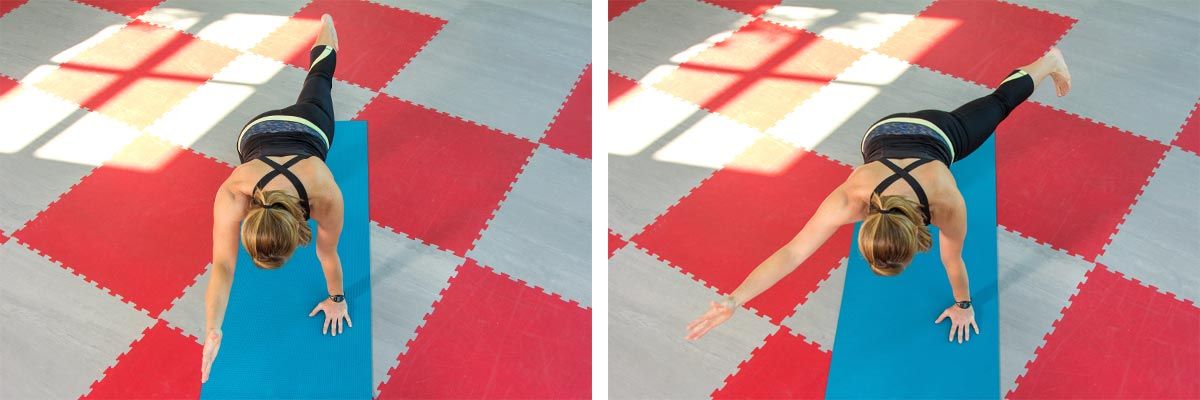
From a bird dog position, drift the extended arm and leg out away from the mid line of the body while maintaining the position of the spine and hips.
Thoracic Spine Mobility – Supine Rotational Reaches
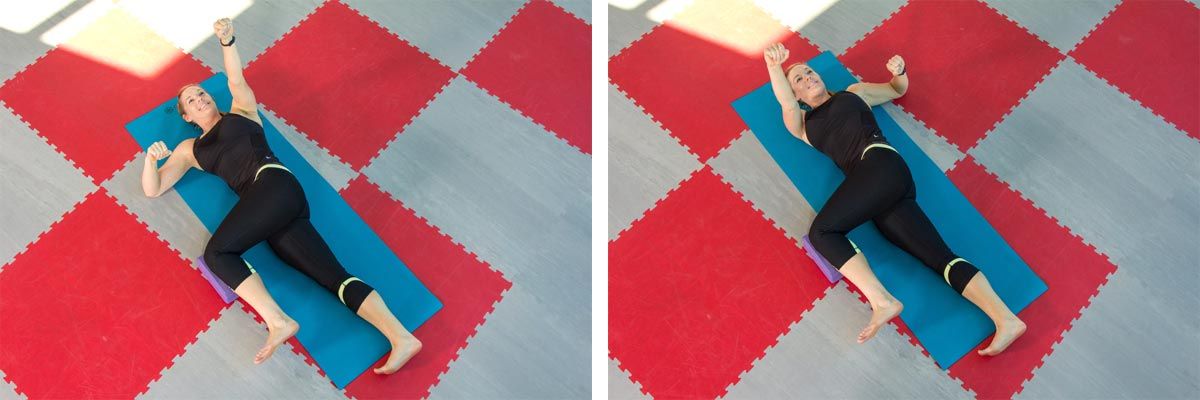
Lying supine on the ground, cross one leg over the other, pressing the knee into the floor or mat. Keep the shoulders on the ground, if possible, and alternate arms reaching up toward the ceiling.
Scapulothoracic Stability – Suspension Shoulder Packing
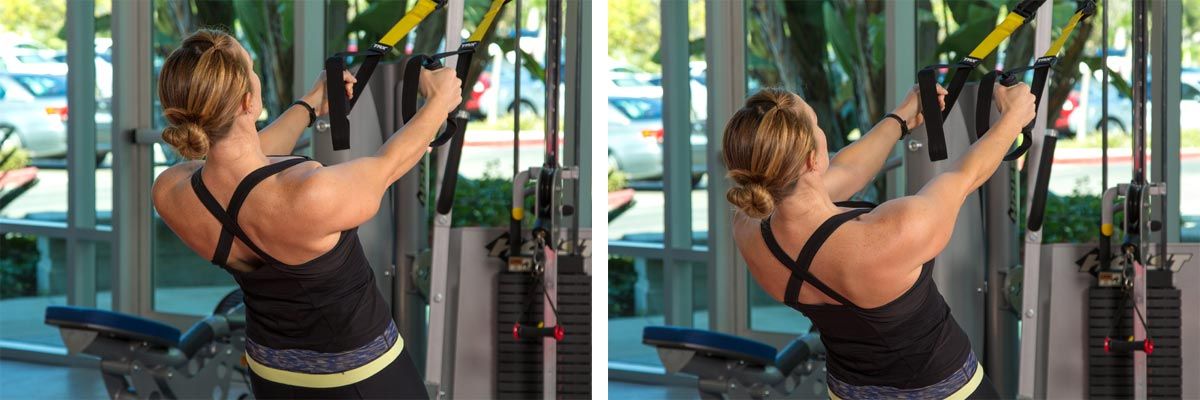
Using a suspension trainer or Smith machine, hang with arms extended. Pack the shoulders by retracting and depressing the shoulder blades (pretend you are bringing them back and down as if putting them into your back pockets).
Glenohumoral Mobility – Scapular Push-ups
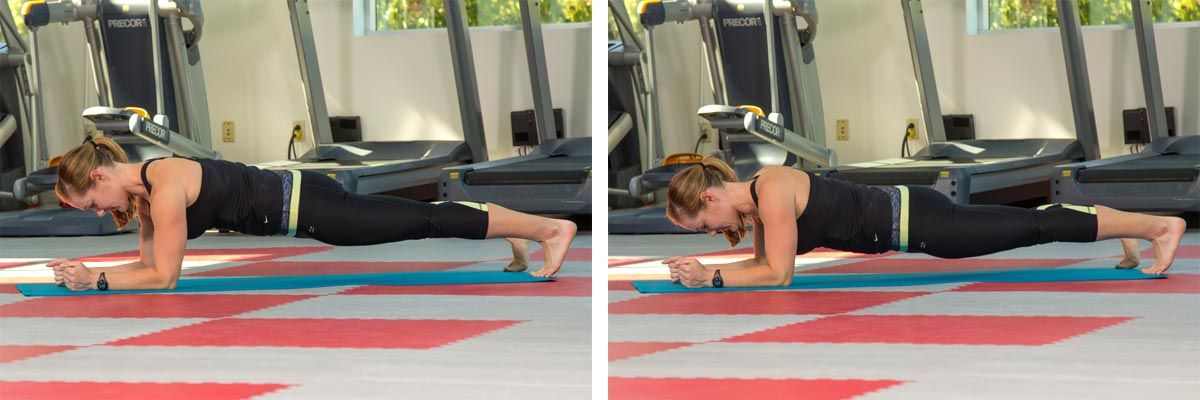
From a prone plank position on the elbows, pack the shoulders. While maintaining a straight line from head to toe, drop the chest down by allowing the shoulder blades to come together in the back. Then push the chest back up and stretch the shoulder blades apart while maintaining the shoulder-pack position. This exercise can also be performed on the knees.




 by
by 




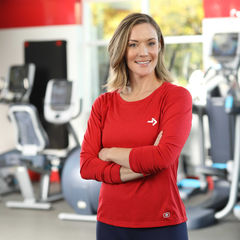






 by
by